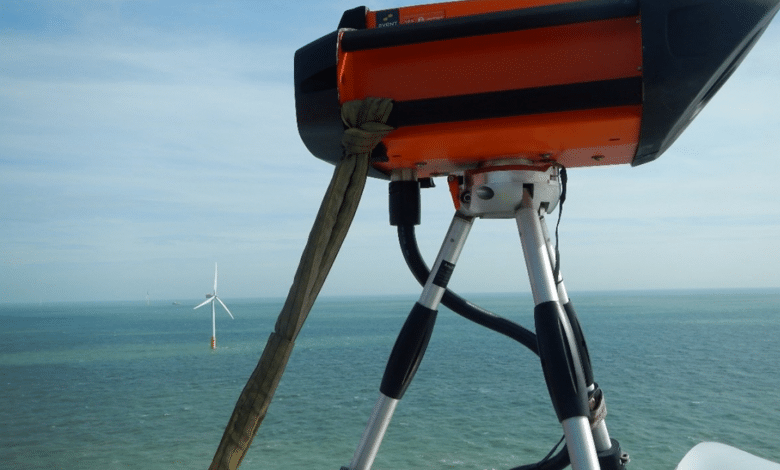Riviera – News Content Hub

The commercial wind-powered vessels of a hundred years ago required experienced sailors who could read the wavetops and set the sails to maximise the energy available, without compromising the safety of the vessel. Today, such an approach is no longer required, due perhaps surprisingly, to technology developed to maintain safety at airports.
Aircraft cannot land or take-off into a wind vortex that trails another aircraft, but this cannot be seen. This led to the adoption of LiDAR (Light Detection and Ranging) technology that “sees” the strength and direction of wind for air traffic controllers. This technology was adopted by the now mature offshore wind industry 20 years ago, and is now entering shipping.
In the Riviera Maritime Media webinar, Wind and weather sensing technology is revolutionising wind-assisted shipping, held 20 September 2023, experts in wind propulsion technology discussed ways in which new sensing technologies, such as LiDAR, can help optimise performance, as well as the deployment and management of wind-propulsion systems.
“Wind sensors and the quality of data was identified as the main unresolved issue”
FinOcean CEO, Konstantinos Fakiolas, highlighted growth in the deployment of wind propulsion systems in shipping. There are now 25 active seagoing ships that utilise these systems, with a threefold expansion predicted by the end of 2024. He emphasised the operational stage of wind propulsion as crucial and raised queries over the reliability of bridge anemometers for optimal system performance.
“The input from the bridge anemometer is fed into the control unit to adjust operational parameters: angle of the sails, rotor RPM, or orientation of the wing angle of attack against the wind,” he said. “Based on this input, the wind-assistance propulsion (WAsP) devices are oriented against the wind to deliver the best possible net forward thrust.”
But is the bridge-based cup anemometer good enough? The bridge structure influences the flow of the wind onto the cup anemometer, alongside factors including the hull, masts and other structures, plus the motion of the vessel.
Mr Fakiolas advocated enhanced sail instrumentation, such as LiDAR, for better data representation and performance optimisation.
Vaisala head of maritime, Mikko Nikkanen, discussed using LiDAR to maximise wind power in marine propulsion. “Last year we conducted a survey for members of the International Windship Association, where we asked about the weather-related challenges,” he said. “Most responders identified wind sensors and the quality of data as being key unresolved issues at the moment.”
Vaisala builds digital twins to determine wind energy parameters.
Ben Coulmier, solution manager at Vaisala, elaborated on LiDAR’s Doppler effect when measuring wind speeds and accuracy compared to cup anemometers, which can show variances up to 60%. “LiDAR is like having a stick several hundred meters long in front of the ship, populated by anemometers,” he said, adding that in some cases, that “stick” could 15 km long.
He noted there have been significant discrepancies between speeds measured by anemometers and wind LIDARs. He noted even a 5% difference could significantly reduce potential fuel and emissions savings. This would be sufficient to payback the installation of LiDAR within a year, he said.
Norsepower provides WAsP devices and its CEO, Jukka Kuuskoski, explained how the company had modernised the Flettner rotor, enabling two Norsepower rotors on a vessel to produce more thrust than the main engine in ideal conditions. He shared the results of a pilot LiDAR project, which he said, had successfully improved the optimisation of a control system.
“One LiDAR unit was installed on top of the bridge. It was a very easy and quick installation, less than two days, including training of the crew,” he said. The test continued for four months and proved a success.
“We have achieved a much better understanding of the conditions on the ship and where the rotor sails were operating,” he said. “It has [enabled] more accurate performance validation and optimisation of the control system.”
He continued: “We then compared that to our own force measurement system, finding that the rotor sail thrust and the wind conditions that are measured with the LIDAR match very well.” He advocated the use of real-time motion compensation with stabilising platforms.
“LiDAR is like having a stick several hundred meters long in front of the ship, populated by anemometers”
WAsP devices and higher quality data from LiDAR are only part of the solution though, and the experts agreed there must be a holistic approach. When a headwind promotes better utilisation of the sails or rotors, it is beneficial to change heading to make sure that there is available thrust to help the main propulsion.
WAsP should be used in combination with voyage or route optimisation systems to advise the captain on the best route that maximises the benefits of the rotor or sail.
Overall, the speakers noted the importance of considering wind propulsion as a complete system and prioritising the understanding of wind conditions for better fuel performance. They emphasised the role of LIDAR and other enhanced wind-sensing technologies in understanding and optimising wind conditions.
Source link
